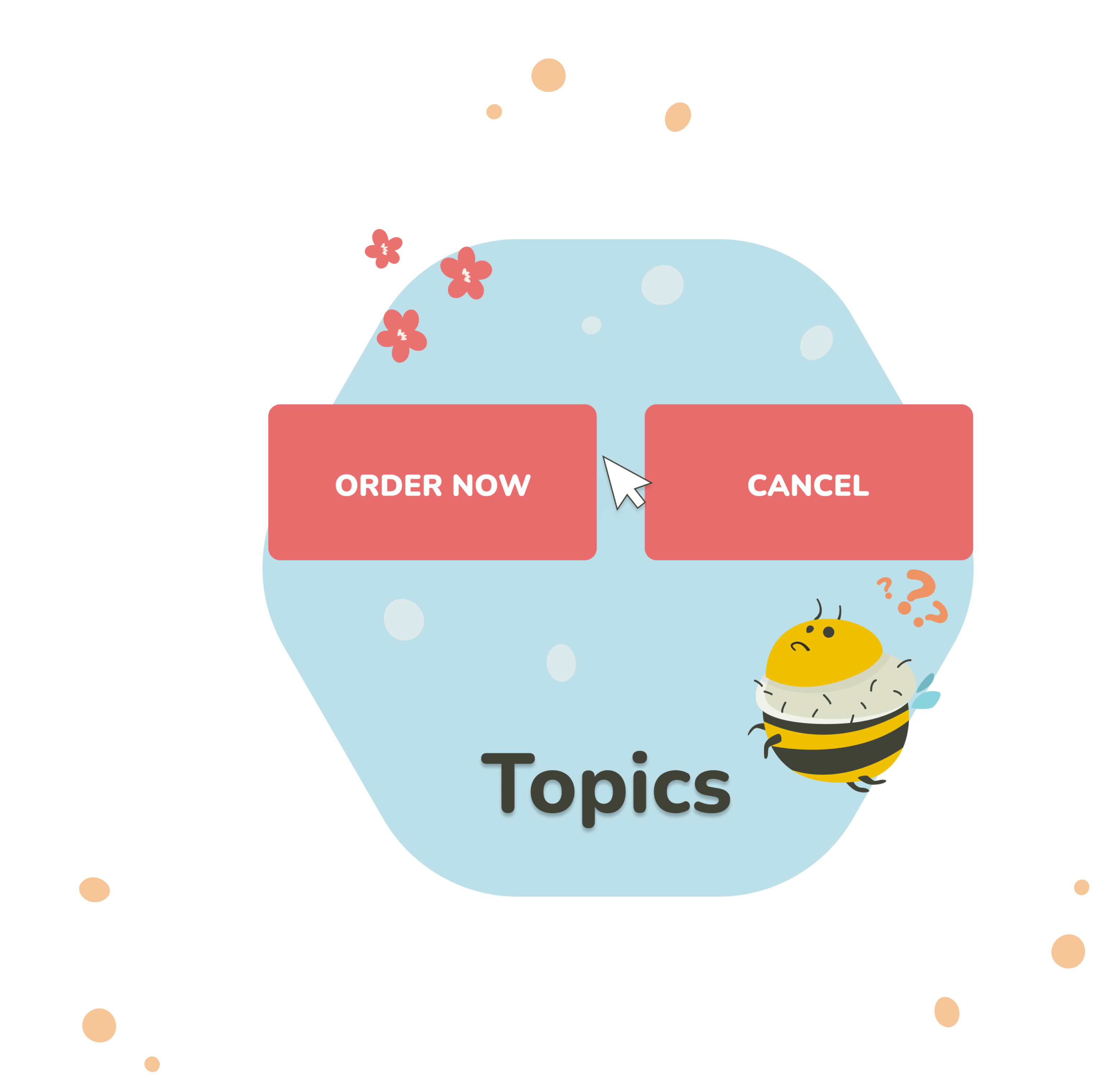Effective customer feedback management can make the process of collecting, analyzing and acting on customer insights quick and efficient. For better results it’s important that your customer feedback collection process is automated, centralized and enhanced with the right tools.
Let’s now take a look at some of the best practices you can implement to streamline your customer feedback management process and make it as effective as possible. We’ll also provide you with a list of helpful feedback tools to try at the end!
What is customer feedback management?

Customer feedback management is the process of gathering, analyzing and acting on customer feedback about your product. It involves collecting feedback from various channels such as surveys, customer interviews, reviews, social media accounts and support interactions, and using it to improve the overall quality of the product and experiences it provides to customers.
Customer feedback management process usually includes these 6 steps:
- Feedback collection: involves collecting feedback through various channels
- Analysis: analyzing obtained insights and looking for common patterns
- Categorization and prioritization: grouping similar issues together, highlighting the things you need to work on first
- Action planning: defining who and how is going to implement changes
- Implementation: implementing the action plan by making necessary changes
- Monitoring and management: testing and evaluating the effectiveness of your solution, collecting feedback on it and closing the customer feedback loop
Why is customer feedback management important?
There are several reasons why customer feedback management is an important part of working on a successful digital product:
- Promotes customer-centric culture: the process of constantly listening to and acting on customer feedback promotes customer-centricity within an organization, helps teams to empathize with the target customer and puts them at the center of the decision-making processes.
- Builds trust and reputation: showing customers that you care about their feedback and are trying to improve the product based on it helps to build strong reputation and ensure customer trust.
- Ensures continuous improvement: effective customer feedback management gives you a regular dose of customer insights that you can implement, ensuring that you’re constantly improving and innovating your product.
- Gives insight into customer needs: one of the most important benefits, customer feedback management helps you stay connected with customers, always be aware of their needs, problems and expectations and, therefore, alter the product to fit those needs.
What are the best practices for customer feedback management?

1. Gather feedback from multiple sources
It’s important to make sure your feedback is collected through various channels, making it diverse and reflecting the needs of different target groups. Take into account both solicited and unsolicited feedback, that is, the one provided by customers voluntarily (social media channels, reviews etc.) and the one you’re seeking yourself (surveys, interviews etc.).
This will help to make sure that you obtain a well-rounded view of customer perceptions and needs.
With that in mind, don’t forget to still choose your customer feedback channels wisely. Go for the ones that are relevant for your target audience. This way you can make sure that it’s easy for them to provide feedback and feel heard.
2. Choose the right timing and context
When it comes to feedback, timing is everything. In order to make sure that feedback is useful and relevant, you need to collect it at relevant touchpoints throughout the customer journey. Therefore, define when customer feedback will be the most insightful for you.
It’s usually best to ask for it after a customer completes a certain action with your product. For example, subscribes to one of your plans, purchases an item or, vise versa, decides they don’t need your services anymore. This is the best time to collect their feedback as the event is still fresh in their memory and they can explain how it went or the reasons behind it.
This, of course, doesn’t mean that you shouldn’t collect feedback on the product in general, without any action triggering it. Constant feedback collection is important, however, you should still approach this process strategically to get the most out of it.
Additionally, don’t forget to always provide context to the customers when you ask for feedback. Explain why you need to hear their opinion, how much you value it and how it will help to change your product for the best.
3. Gather both qualitative and quantitative insights
By collecting both qualitative and quantitative data you’ll be able to get a more holistic view on your customers, their needs and problems. While quantitative feedback will help you measure the effectiveness of your design and product activities and explain what’s happening in terms of CX, the qualitative data will help to find out why it’s happening and how you can improve the product.
This comes for your research methods in general, but also the questions you use in surveys, for example. Make sure you create a balance of open-ended and closed questions so that you can see both the numbers and the reasons behind them.
4. Prioritize feedback
Not all the feedback you gather will be of equal importance. Some of the issues and concerns will need to be solved immediately as they significantly influence the customer experience, while other issues can wait. Therefore, it’s important to prioritize issues in their severity and act on feedback in the order of priority: from critical to least important.
This approach will help to allocate resources effectively and address the most pressing concerns first, before jumping into solving some less important details. This, however, doesn’t mean that you should postpone some of the solutions for later and forget about them completely. Do your best to incorporate them into your plan and eventually address all of the customer concerns, no matter their severity.
Categorization and prioritization of feedback is an important part of feedback analysis.
5. Close the feedback loop
Closing the customer feedback loop means communicating to customers that their feedback is being addressed and issues are taken care of. This will help to show customers that their feedback is valued and that your company is committed to improving their experience as much as possible.
This can be done by reaching out to them after you’ve received the feedback and letting them know that it’s going to be acted upon. Update the customers on the progress and the actions that are being taken.
Finally, reach out to them after you’ve fixed the issue. You can even ask them to test it, provide additional feedback and see how satisfied they are with your solution. All of this can be done in the form of personalized emails to their inbox.
6. Foster a feedback culture
An essential step of customer feedback management is creating a feedback culture within your organization. Encourage employees from different departments and of different levels to embrace feedback and make it a driving force in their work. Your teams should know how to actively listen to customers and act as advocates for continuous improvement.
By fostering a culture that values customer insights, you create an environment where feedback is encouraged, shared, and used to drive positive change throughout the organization.
The best customer feedback management tools

Customer feedback management is definitely not an easy task and, therefore, you should not be expected to perform it without some extra help.
There are tons of online customer feedback tools that help with the automation of customer feedback management, help you centralize all feedback in one place, distribute customized feedback questionnaires, provide advanced analytics capabilities and useful templates.
Some of them even have a free plan for those who are on a budget! Here are some of the best customer feedback management tools out there:
- Canny
- Podium
- UXtweak
- Usersnap
- Hubspot Customer Feedback
- Instabug
- Nicereply
- SurveySensum
- Typeform
- Qualtrics
- Feedier
- Mopinion
- BazaarVoice
- Survicate
- Intercom
- Trustpilot
- Wootric
- Bugherd
- UserVoice
- Pendo
- InMoment
We’ve put together a handy comparison of each tools’ features, pricing, pros, cons and reviews to help you choose the best customer feedback tool for your needs!
Wrapping up
Now that you know how to effectively collect and manage customer feedback it’s time to get into it! Use this knowledge and a set of powerful feedback tools to help you in the process.
And for survey creation – UXtweak got you covered! Use our all-in-one research tool to empathize with your customers, collect their feedback and analyze the data, all within one platform!
Register for your UXtweak account and start collecting customer feedback today!




